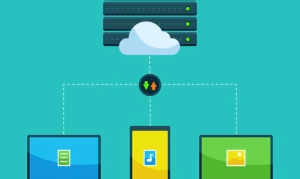Introduction
Anyone who’s ever managed a busy website knows that moment when shared hosting just… stops keeping up.
The pages take a few seconds too long to load. The traffic spikes, and suddenly your site feels like it’s running through molasses.
That’s when most businesses start thinking about VPS hosting. It’s faster, it’s private, and you finally get the freedom to configure things your way. But there’s one big fear that comes with the upgrade:
“What if my site goes down during migration?”
We’ve heard that question from almost every client who’s made the jump. The answer is simple — it doesn’t have to.
At ChromeIS, we migrate sites every week without a single minute of visible downtime. It’s all about planning.
Step One — Know What You’re Dealing With
Before you start copying files, take inventory.
A website isn’t just HTML sitting in a folder. It’s databases, email configurations, SSL certificates, DNS entries, cron jobs, redirects — and sometimes, stuff you forgot even existed.
We always start with an audit.
Our engineers list every component and dependency before moving a single byte. It’s the boring part, but it’s what separates a clean migration from a midnight panic.
If you’re doing this yourself, think like an inspector. Check what runs your site, where it lives, and what it connects to. You’ll thank yourself later.
Step Two — Build the New Home First
You wouldn’t pack your boxes without checking if your new place has doors, right?
The same applies to servers.
Before migrating, set up your Cloud VPS to mirror your current environment.
Match PHP versions, database engines, SSL, and directory structures. Make it identical — down to the folder names.
When we migrate ChromeIS clients, we build a staging environment that behaves like a clone of their live site. When it’s time to move, it’s just a switch, not a rebuild.
Step Three — Copy While the Lights Are Still On
This is where downtime usually creeps in — when someone takes their site offline to copy files. Don’t do that.
Use rsync or another tool that copies files quietly while your site is live. Once the first copy is done, run a quick sync to catch new uploads or changes.
If your site uses WordPress or another CMS, export your database, import it to the new server, and double-check every table.
We once had a client who ran a large e-commerce site. The site stayed live the entire time we moved 12 GB of data because everything was mirrored quietly behind the scenes. The users never noticed.
Step Four — Test Like It’s Not Your Site
Here’s the thing about testing — people check what they use, not what visitors do.
Click the odd pages. Submit the forms. Try the “forgot password” link.
Then, look at what attackers would test: permissions, HTTPS redirects, error logs, and performance.
At ChromeIS, we simulate traffic on the staging site before any DNS switch. It’s how we catch the “invisible” problems that show up only under load — the ones you’d rather discover before launch day.

Step Five — The Switch Nobody Notices
The DNS cut-over sounds scary, but it’s easy if you prepare.
First, lower your DNS TTL (Time to Live) at least a day before migration. It tells browsers and providers to refresh faster when you change your IP address.
Then, when everything’s tested, flip the switch. Keep the old hosting live for another 48 hours. That overlap means anyone still using cached DNS gets served smoothly.
At ChromeIS, we usually schedule migrations in low-traffic hours — midnight or early morning — and monitor everything for the next two days. If anything goes off, we fix it before anyone wakes up.
Bonus — Tune It Up Once You’re Done
After the dust settles, take five minutes to clean up.
Delete old plugins, turn on caching, and remove temporary files.
One client doubled their speed post-migration just by letting our team optimize their VPS setup — no code changes, no redesigns. It was simply because VPS resources aren’t shared with hundreds of other sites.
Final Thoughts
Migrating to a VPS doesn’t have to be stressful.
With patience and a clear checklist, your site can move without a single hiccup.
At ChromeIS, we’ve done this enough times to know that “downtime-free” isn’t luck — it’s a process. The right tools, careful timing, and engineers who treat your site like their own.
If your website is outgrowing shared hosting, don’t wait for it to crash before upgrading.
A well-managed VPS migration is the difference between a late-night crisis and a quiet, confident launch.

